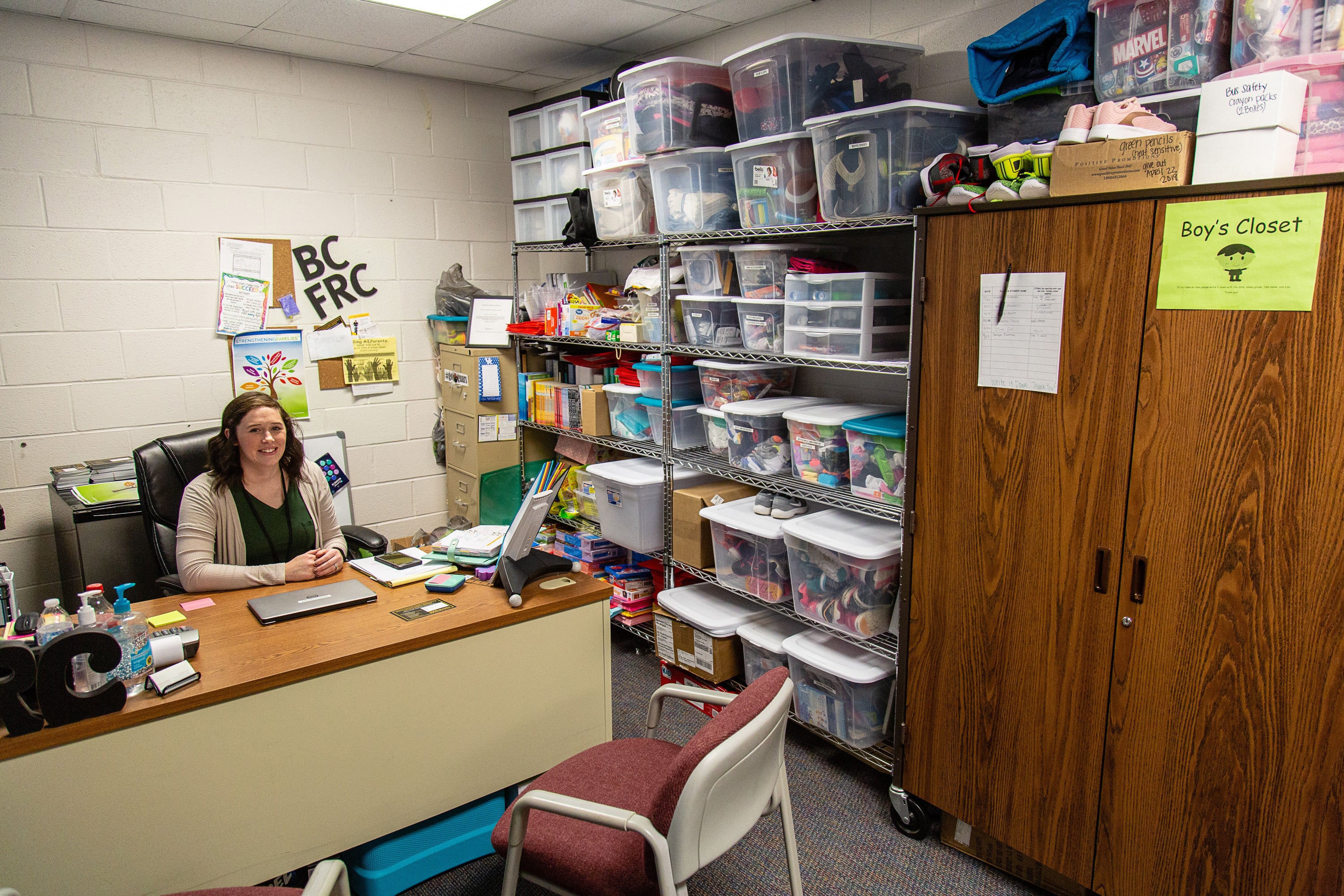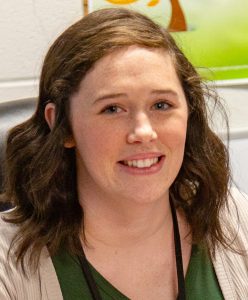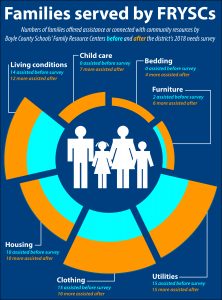School resource centers strive to make sure kids can focus on learning
Published 8:29 pm Friday, April 5, 2019

- Family Resource and Youth Service Center Coordinator Kristin Griffin sits in her office at Junction City Elementary School, where she keeps a large amount of items available for students, such as clothing, shoes, school supplies and snacks. Photo by Ben Kleppinger.
Kristen Griffin’s desk at Junction City Elementary School sits in a room that looks more like a supply closet than an office. Shelves line the walls, packed with shoes, pencils, crayons, blankets and snacks. She has not one but two wardrobes packed with kids clothes in any size you might need.

Griffin
Griffin is the school’s family resource and youth service center coordinator, a position you might not know a lot about — unless you’ve ever had a child in need.
“I don’t think the public realizes all that we do,” said Griffin, who coordinates the family resource center at Perryville Elementary School, as well.
The family resource centers (known as “FRYSCs,” which is pronounced “frisky”) in Boyle County’s school district do a lot of things not commonly associated with schools: They help connect hungry kids with food on the weekends; they give kids clothes when they’re in need; they help parents afford rent and utilities; they provide beds and furniture when necessary; they assist with transportation issues; they help families dealing with living-condition issues such as insect infestations.
Griffin said it’s all about “trying to remove those barriers at home for the students. Then they can focus fully on learning.”
Since a large-scale needs survey completed by the school district last year, the FRYSCs are doing more now than ever before. The survey of every family in the district helped identify 70 families with needs who weren’t getting help before. That more than doubles the number of families getting assistance from the school

Graphic courtesy of FRYSCs
district in seven categories, according to David Morris, the head of a district subgroup that’s using the survey data to address “basic needs” through the FRYSCs.
Morris explained that FRYSC coordinators have modest budgets available to help families in need thanks to grant funding and local donations. And they’re also really good at connecting families with other assistance organizations in the community that can help with things like rent and utilities beyond what the school district can do.
“The ultimate goal is that when they go to school, that their major concerns are academic and how to perform to the best of their ability, and not if they’re going to be homeless or if they’re not going to have heat, or if they don’t have food or if they don’t have adequate clothing to wear,” Morris said. “If you can take away those concerns or at least alleviate them, then I think that you’ve done a whole lot toward our mission of educating the children.”
Stephanie Wade, a spokesperson for the school district, said there are a lot of people and churches in the community who donate both cash and items like clothes and furniture to the FRYSCs, which makes what they do possible.
When one family gets help, it’s often the case that more than one kid lives in the home, so multiple students in the school district benefit, Wade said.
“These are great families, they’ve just come on hard times with jobs or family illness — lots of things like that,” she said. “… As a community, we’re going to reap the benefits of this as our kids progress through our system. If they’re getting their basic needs met, then they’re going to be able to achieve more academically; they’re going to achieve more post-graduate. Investing in our schools, investing in our kids, is probably as a community one of the best things that we can do.”
The needs survey conducted in the fall gathered responses from the approximately 2,700 families in the Boyle County School District. From those responses, the basic needs subgroup worked with the FRYSCs to help additional families in the following areas:
• Housing assistance: 10 new families (10 already being assisted)
• Bedding: 4 new families
• Furniture: 6 new families (2 already being assisted)
• Utilities: 15 new families (15 already being assisted)
• Clothing: 16 new families (15 already being assisted)
• Child care: 7 new families
• Living conditions: 12 new families (14 already being assisted)
The range of what FRYSCs help families with can be surprising: Morris said they’ve helped provide beds for kids who don’t have them; worked with landlords to replace broken doors that are increasing utility costs; even met families at laundromats to pay for them to run loads of laundry.
Wade said many families reacted pleasantly when they learned the district had reached out to see if they had needs, then worked to help. “We’re not going to wait for you to come to us; we’re going to seek out who needs assistance, who needs help,” she said.
The FRYSCs do a lot of referrals to community agencies that are better equipped financially, but they do provide some direct assistance to families when they can and it’s appropriate, Morris said.
Since the survey, the FRYSCs have helped cover $2,195 worth of rent — mostly in small amounts and none larger than $500, he said. They’ve also paid $3,772 toward families’ utility bills and $1,091 toward water bills.
Wade said the work of churches and community agencies to help beyond what the FRYSCs can do is “really amazing to see.”
“It’s a true partnership,” she said. “And we’ve always had that. I think this (survey) just shined a light on areas where we could do more.”
Wade added that the survey isn’t the end of the district’s efforts to help families with their basic needs.
“This isn’t a one and done. This is ongoing and it’s continuing the grow our programs to meet the needs of our kids and families.”




